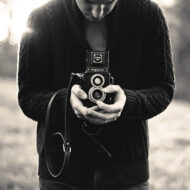Tools of the Trade
Learning to Adapt & Making Life Easier
In recent months, my typical tools of the trade have expanded to include some unconventional items (for me, anyway). My very first real live art teacher was of the mindset that all you needed to draw besides paper, was a pencil. Just a pencil. Nothing else. Not ever an eraser.
“If you get it right the first time, you won’t need to erase,” she said.
She wasn’t joking and she seriously scared all the kids who had never taken an art class before or even attempted to draw anything at all. To be fair, as harsh as her words seem, she was trying to get a point across. If we learned how to see properly and learn proper technique, we’d be able to draw that much easier. Still, I’ll admit that she made me nervous too and I’d been drawing from the moment I could manage to hold a pencil.
Over the years her words stuck with me. And while I have used countless kneadable erasers since then, I haven’t ever incorporated much else in my tool box. But over the past couple of years, I’ve been watching drawing videos on YouTube for inspiration. So many of the artists that I admire use a variety of tools besides pencils and erasers and are getting fantastic results.
So what would be the harm in expanding my own tools of the trade? I couldn’t come up with an answer and decided to give some of these tools a try for myself.

Cotton swabs, stomp, brush
I chose three tools for blending and they all work quite well for my purposes. The first one, a stomp, is a typical drawing tool. It’s basically rolled paper that ends in a point. They’re inexpensive and can be found in any art supply store. The advantage for me with a stomp is that the point allows me the precision I need to get into some tightly detailed areas. This would be much more difficult with my other two tools.
The second tool is a cotton swab. These are also inexpensive and there’s always a box at home. I can use these to blend pencil or two apply powdered graphite to larger areas.
The third tool is a flat paintbrush. I happened to have several brushes lying around from my art school days, but I used a couple different size brushes from a cheap gift set I received as a thank you for ordering some other art supplies. Using brushes allows for a much softer blend and they’re perfect when you’re trying to get a nice, even shade without visible pencil lines.
All three have made my life much easier. My old teacher would probably be going into conniptions about blending. She thought that artists should just draw the way they intend for it to look from the get go. Blending was akin to cheating in her book. If you want that area a medium grey, then just draw it that way to begin with.
I’ll be honest. Her words have haunted me. But as I said, I’ve been drawing since I could hold a pencil and it’s been almost 30 years since I took her class. I’ve paid my dues, so to speak. I’ve done it her way for the better part of my adult life (aside from the eraser). I am grateful for the discipline, but at this point in my life (almost 50), I am okay with trying new things and in general, making my life and my work easier.
Making my work that much easier means I can get more work done. And honestly? My clients don’t know the difference and they wouldn’t care anyway so long as their fur babies look like their fur babies!
Do you use any unconventional tools in your work? Leave a comment below.
This blog contains Amazon Affiliate links. As an Amazon Associate, I may earn from qualifying purchases.


Recent Comments